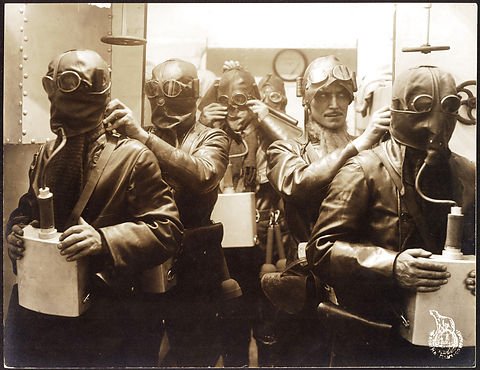A Trip to Mars
(Himmelskibet)
Denmark, 1918, 81’
Director: Holger-Madsen
Screenplay: Sophus Michaëlis, Ole Olsen
Cast: Nicolai Naiiendam, Gunnar Tolæs, Zanny Petersen, Alf Blütecher, Frederik Jacobsen, Lilly Jacobson, Svend Kornbeck, Philip Bech
Producer: Nordisk Films Kompagni
DCP
Source: Det Danske Filminstitut
Translation: ENG / PL / Introduction in the Polish Sign Language
During World War I, the Danish film industry lost its international significance, but even at the twilight of its power, it managed to produce two epic spectacles and some of the first full-length science fiction films: the catastrophic The End of the World (1916) by August Blom, and the space travel film A Trip to Mars (1918) by Holger-Madsen. The second one is a lesser-known work, yet it expands on the allegorical potential of science fiction.
Navy Captain Avanti Planetaros, inspired by his astronomer father, decides to follow in Christopher Columbus’ footsteps and embark on a cosmic journey in search of new worlds. He becomes a pilot and, together with a young scientist, Dr. Krafft, starts building a spaceship. Despite the opposition and mockery from Professor Dubius Planetaros, he gathers a crew of fearless people and sets off on an expedition.
The Excelsior ship bears a striking resemblance to an airship. These are the first images of the interior of a spaceship, the reflections of which we can also see in Our Heavenly Bodies [1925], also screened during our festival. The film pays little attention to technical details, but its space travel sequence stands out, vividly depicting the weariness of prolonged confinement, with boredom and claustrophobia driving the crew to the edge of mutiny. Before the rebellion, Captain Planetaros warns against landing on the planet Mars. On the Red Planet, people discover a peacefully inclined society that has reached a higher level of development than that on Earth – Martians are humanoid creatures (with costumes styled as ancient Greek togas with Nordic and Christian accents), but at the same time free from diseases, sadness, and above all violence: they do not eat meat, they are not aggressive, and instead of punishment they use forgiveness. The “heavenly” journey turns out to have not only a physical aspect to it, but also a metaphoric one, with the heroes arriving in a utopia with high moral standards.
An idealistic vision of a distant planet was associated with Holger-Madsen's desire to create a pacifist allegory in response to the ongoing Great War (the director was famous at that time for works with that exact message). A Trip to Mars can be seen both as a form of people’s autocritique of their own aggressive behavior, greed, and a colonial mindset, and as a work with a moralizing undertone. The filmmakers (including the legendary Danish producer Ole Olsen) draw inspiration from travel novels, which often contain educational elements, and refer to utopian visions to create an anti-war message. The structure of the film, and even the staging of individual scenes, strongly references the pioneering Trip to the Moon (1902). This compilation highlights the uniqueness of the Trip to Mars, as in Georges Méliès’ movie, a group of scientists causes the Selenite order to collapse, attacks them, and even abducts several of them, taking them to Earth.. Holger-Madsen's film is a work tailored to the needs of its time, yet still addressing the issues relevant today.
By Marta Stańczyk
It is one of the first full-length digital restorations, encompassing a complete narrative reconstruction based on the negative and the text of the original intertitles. The film required only minimal repairs, as the fireproof tape material from the 60s preserved the quality of the original negative.
The screening will be preceded by a lecture delivered by Thomas Christensen and a series of short films, accompanied by the music of Hania Derej.
live music: Hania Derej


